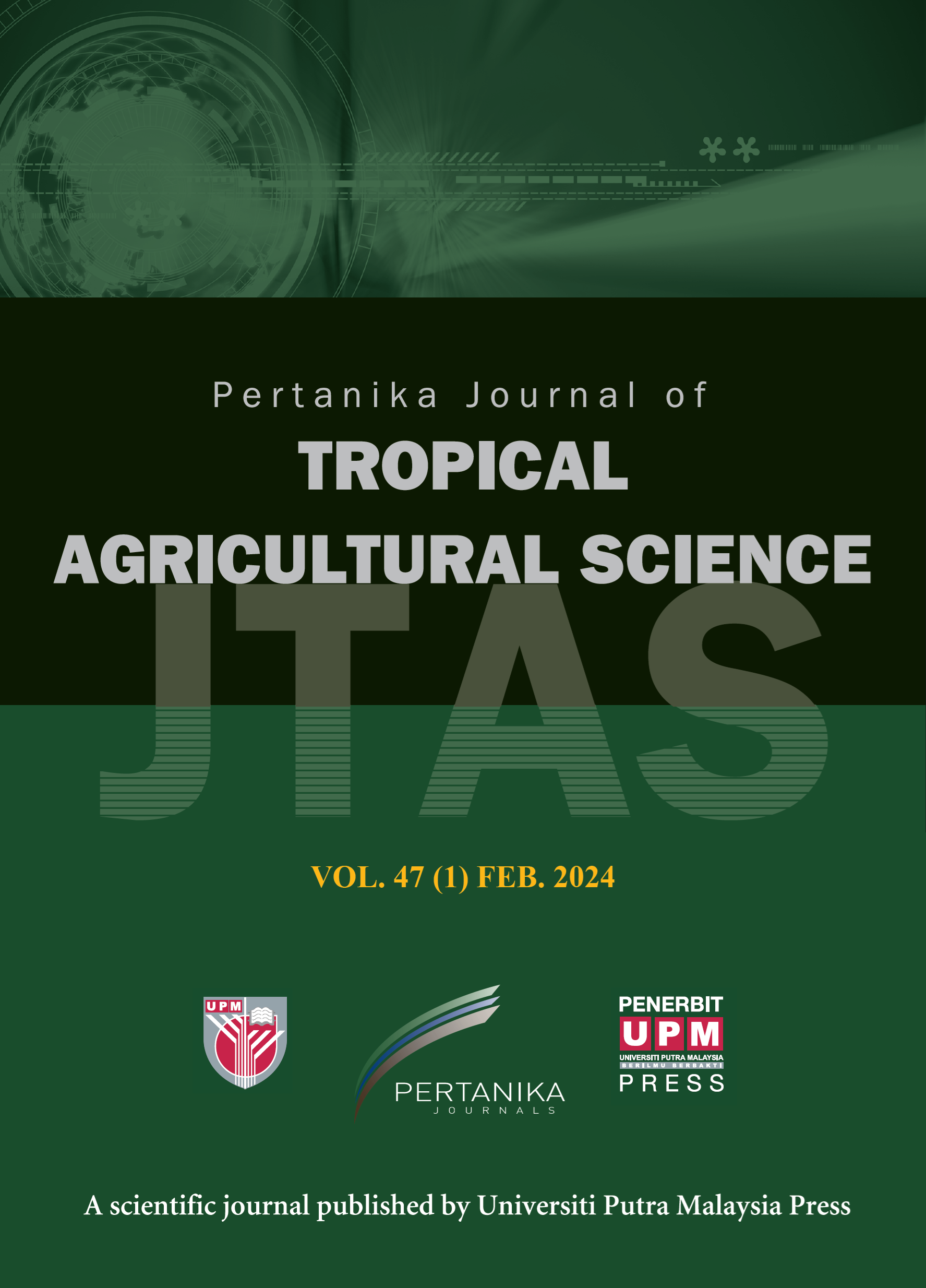PERTANIKA JOURNAL OF TROPICAL AGRICULTURAL SCIENCE
e-ISSN 2231-8542
ISSN 1511-3701
Weed Populations and their Buried Seeds in Rice Fields of the Muda Area, Kedah, Malaysia.
Ismail Sahid, Z. Noor Faezah and N.K. Ho
Pertanika Journal of Tropical Agricultural Science, Volume 18, Issue 1, April 1995
Keywords: rice weeds, buried weed seeds, cultural practices
Published on:
Twenty-five weed species belonging to 15 families were found in rice fields near Kampung Tandop, in the Muda Irrigation Scheme, Kedah, Malaysia. The dominant weeds in dry-seeded rice were Utricularia aurea Lour., Fimbristylis miliacea (L.) Vahl, Echinochloa crus-galli (L.) Beauv., Monochoria vaginalis (Burm. f )Presl and Najas graminea (Del) Rzdl.. In the wet-seeded rice, the dominant species were N. graminea, Lemna minor L., Sphenoclea zeylanica Gaertn., U. aurea, and Sagittaria guayanensis H.B.K while in volunteer seedling rice fields, the dominant species were Echinochloa colonum (L.) Link., Fimbristylis alboviridis C.B. Clarke, F. miliacea, Cyperus babakan Steud. and Fuirena umbellata Rottb.. Dry-seeded rice fields contained the highest number of weed seeds (930,910/m2 in the top 15 cm of soil); volunteer seedling rice fields contained 793,162/m2 and wet-seeded rice fields 712,228/m2. In general, seed number declined with increasing soil depth. At 10-15 cm depth, seeds of U. aurea and S. zeylanica were the most abundant in dry- and wet-seeded rice fields, whilst seeds of Scirpus juncoides Roxb. and F. miliacea were most abundant in volunteer seedling fields.
ISSN 1511-3701
e-ISSN 2231-8542




